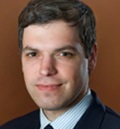The Part D Premium Lesson For Exchanges
This article was originally published in RPM Report
Executive Summary
Outgoing CMS Principal Deputy Jon Blum called on the Part D experience in trying to discuss the challenges of lowering cost sharing for specialty tier drugs in the exchanges.
History doesn’t repeat itself but it does rhyme, so the Mark Twain quote goes.
In that vein, CMS Principal Deputy Administrator Jon Blum looked to the Medicare Part D experience when the issue of high cost sharing formulas for patients taking specialty drugs in health exchange plans came up at the Pharmaceutical Research & Manufacturers of America annual meeting on April 10 in Washington, DC.
The issue has come up as higher cost drugs are being put in tiers that carry commensurately higher out-of-pocket costs for those who have purchased insurance plans on the exchanges.
“I feel most comfortable talking about the Part D experience because we obviously have had a longer period of time and better data and better experience to talk about some of the issues we’ve raised about the tradeoffs between tight formulary management and cost sharing and premiums,” Blum responded when asked how CMS thinks about these issues.
Although Blum will be leaving CMS in May (see below for memo from CMS Administrator Marilyn Tavenner), the lessons learned from Part D that can be applied to the exchanges still hold.
Blum explained that every year the agency receives “pleas” to lift the specialty tier and lower cost sharing for higher priced drugs.
“We have resisted those changes for two primary reasons. One is we are confident that when you lower that cost sharing threshold, you translate that into a higher Part D premium,” Blum explained.
He highlighted feedback on the proposed Part D rule from stakeholders that “Part D premiums have stayed low and that’s a good thing and CMS should continue that trend.” Blum asserted that if CMS were to mandate lower cost-sharing on “specialty” tiers, those costs would be passed on through higher premiums.
The second reason to maintain cost sharing levels as they are by tier, according to Blum, is to keep drug prices in check.
“The second concern that we have is that if we lower the patient cost and in effect raise the cost burden to taxpayers and government programs, I believe, and this may be a controversial statement but I’ll say it, that’s going to transform [the formula drug companies use] to set the prices.”
He added: “And so, we believe and we feel comfortable saying this, that part of the reason drug prices get set, how they get set, is taking into account the insurance coverage and the cost sharing burden and that drives the ultimate price that gets charged to payors and to consumers.”
“We have to strike these balances,” Blum summarized. “To us as a payor, the Part D program experience, simply to lower the cost sharing burden puts pressure on other areas that we need to be mindful of.”
That balance between access and drug expenditures played out in two high profile initiatives overseen by Blum and the Medicare program in recent months.
First, there was the failed attempt to lift specialty formulary protections on three of the six so-called “protected classes”: antidepressants, immunosuppressants and antipsychotics (Also see "Class Warfare: CMS Proposes Sweeping Changes to Part D; “Protected Class” Cuts Just the Start" - Pink Sheet, 12 Feb, 2014.).
Second, and more recently on April 9, CMS released data on the number and type of services individual physicians and certain other health care providers (total of 880,000) furnished in 2012 under the Medicare Part B fee-for-service (FFS) program and the amount (total of $77 billion) that Medicare paid them for those services. The connection was immediately made by the media and other industry stakeholders between the physician specialty and the leading prescription drugs in the cancer and ophthalmology categories.
In a same-day media briefing, Blum said CMS can’t encourage or require doctors to prescribe lower cost drugs when alternatives are available but the “goal of the release” was to raise questions about issues like prescribing practices and get the public and media involved.
The question the public and the media are asking: what comes next?
Tavenner’s Memo On Blum’s Departure
It is with mixed emotions that I let you know that our Principal Deputy Administrator, Jonathan (Jon) Blum, has decided to leave CMS to pursue new opportunities. Jon was the first political appointee to come to CMS under the Obama Administration in March 2009. He spent most of his time at CMS as Deputy Administrator and Director of Center of Medicare (CM). Under Jon’s leadership, the Medicare program has served as one of our primary drivers to shift our health care system to reward quality, care improvement, and value. The Medicare team’s accomplishments are too many to list, but include developing the ACO regulations, implementing our quality framework for Medicare Advantage plans, implementing our competitive bidding program for durable medical supplies, and developing many of our value-based payment strategies. Medicare per-capita cost growth has remained at the lowest sustained period under Jon’s tenure, while quality of care has increased and new benefits have been added to the program.
In August 2013, Jon was appointed to be CMS’s Principal Deputy, helping to coordinate much of our payment reform and cost-reduction strategies across the agency. We will miss Jon’s passion for care improvement and cost reduction, his standards of excellence, and his commitment to the CMS programs and the beneficiaries and patients for whom they serve.
Jon’s last day at CMS will be Friday, May 16th. Please join me in congratulating Jon on his 5 ½ years of service at CMS and wishing him all the best in the next phase of his career.
Marilyn Tavenner
